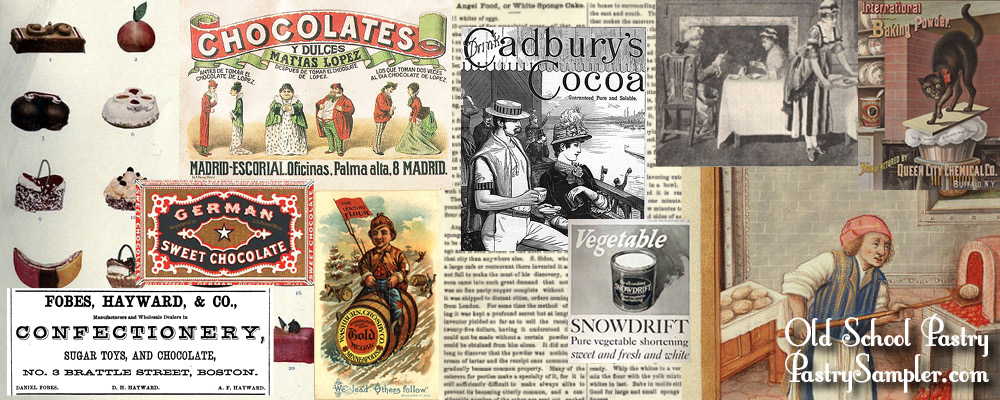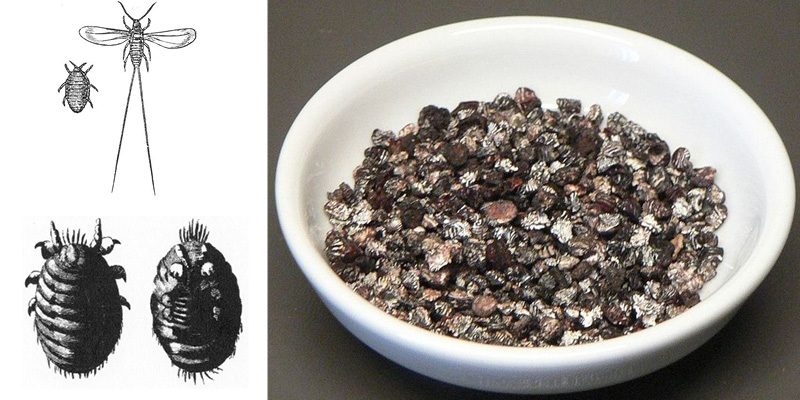making red food coloring from cochineal

How to Make Red Food Coloring and Carmine from Cochineal in 1864
By Renee Shelton
I've already shared how they made green and yellow food coloring in 1864. After reading how color was made, red food coloring is the most unusual for me.
Cochineal is the red coloring produced from the manufacture or process of the Cochineal (Dactylopius coccus), a scale insect that produces and stores a deep reddish-maroon color inside its body. Although the thought of eating ground up bugs is not very appealing, it is a natural coloring that has been used for hundreds of years, and is still used today. Carmine is the cochineal product further refined and processed.
These authentic food color recipes come from The Complete Confectioner, Pastry-Cook and Baker, published in 1864.
Traits of Good Cochineal for Use in Coloring
One of the principal colours requisite for the confectioner’s use is coccinella, or cochineal. The sorts generally sold are the black, silver, foxy, and the granille. The insect is of two species, the fine and the wild cochineal; the fine differs from the wild in size, and is also covered with a white mealy powder. The best is of a deep mulberry colour, with a white powder between the wrinkles, and a bright red within. A great deal of adulteration is practised with this article, both at home and abroad; it is on this account that persons prefer the silver grain, because it cannot be so well sophisticated. Good cochineal should be heavy, dry, and more or less of a silvery colour, and without smell.
To prepare the recipe for a rich red coloring, these ingredients are called for: cochineal, river water, potash or soda, powdered alum, and optionally powdered loaf sugar. To prepare the recipe for Carmine, these ingredients are further needed: filtered water, alum, and possibly solution of tin or solution of green vitriol (described below).
After all this, it makes you appreciate just going to the market and finding food coloring in any shade you need for your projects, whenever you need it.
Recipe for Cochineal:
To Prepare Cochineal – Pound an ounce of cochineal quite fine, and put it into a pint of river water with a little potash or soda, and let it boil; then add about a quarter of an ounce powdered alum, the same of cream of tartar, and boil for ten minutes; if it is required for keeping, add two or three ounces of powdered loaf sugar.
Recipe for Carmine:
Carmine – Reduce one ounce of cochineal to a fine powder, add to it six quarts of clear rain or filtered water, as for cochineal. Put this into a large tin saucepan, or a copper one tinned, and let it boil for three minutes, then add twenty-five grains of alum, and let it boil two minutes longer; take it off the fire to cool; when it is blood warm pour off the clear liquor into shallow vessels, and put them by to settle for two days, covering them with paper to keep out the dust. In case the carmin has not separated properly, add a few drops of a solution of tin, or a solution of green vitriol, which is tin dissolved in muriatic acid, or the following may be substituted: – one ounce and a half spirit of nitre, three scruples of sal-ammoniac, three scruples of tin dissolved in a bottle, and use a few drops as required. When the carmine has settled, decant off the clear which is liquid rouge. The first sediment is Florence lake, which remove, and dry the carmine for use. This preparation is by far superior to the first, for in this same colour is obtained as before, which is the liquid rouge, the other and more expensive parts being invaribly thrown away. The carmine can be obtained by the first process, as can be seen if the whole id poured into a clear bottle and allowed to settle, when the carmine will be deposited in a layer of bright red near the bottom. It produces about half an ounce of carmine.
Different Shades of Red Using Cochineal:
Purple – Mix carmine or cochineal, and a small portion of indigo.
Lilac – The same, making the blue predominate.
Orange – Yellow, with a portion of red.
Gold – The same, but the yellow must be more in excess.
Sources:
Parkinson. The Complete Confectioner, Pastry-Cook, and Baker. Philadelphia: Lippincott, 1864.
This article was first published on oldschoolpastry.pastrysampler.com on April 14, 2011. It was updated on September 30, 2020.

